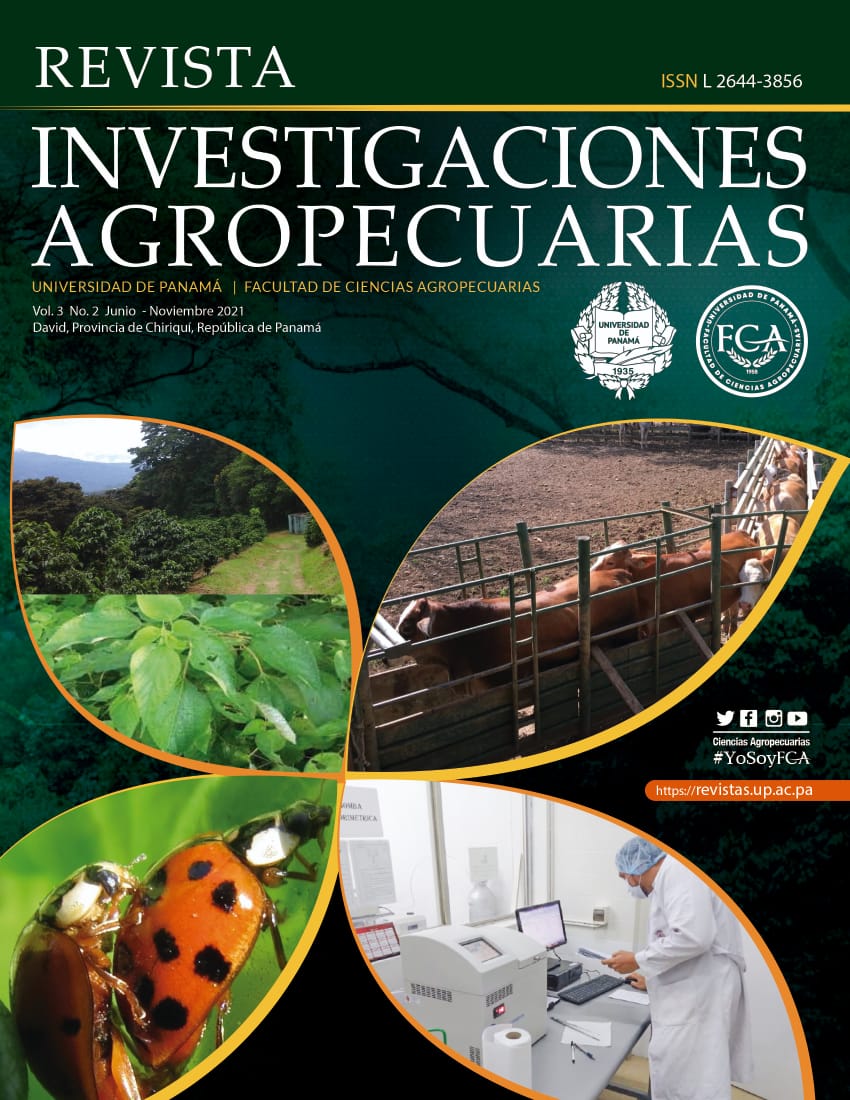References
Abrego, C.O. (2012). Manual para la producción orgánica de café robusta. MIDA. Secretaria Técnica. Panamá. 51 p.
Altieri, M.A., Koohafkan, P., & Holt Gimenez, E. (2012). Agricultura verde: Fundamentos agroecológicos para diseñar sistemas agrícolas biodiversos, resilientes y productivos. Agroecología, 7(1), 7-18. Recuperado a partir de https://revistas.um.es/agroecologia/article/view/170961
Armbrecht, I., & Gallego, M.C. (2007). Testing ant predation on the coffee berry borer in shaded and sun coffee plantations in Colombia. Entomologia Experimentalis Et Applicata 124, 261-267.
CATIE (Centro Agronómico Tropical de Investigación y Enseñanza). (2012). VIII Curso regional sobre fundamentos de la caficultura moderna. Turrialba, Costa Rica. Recuperado de: https://books.google.com.pa/books?id=9twOAQAAIAAJ&pg=PA97&dq=produccion+de+las+plantas+de+cafe+en+granos&hl=es&sa=X&redir_esc=y#v=onepage&q=produccion%20de%20las%20plantas%20de%20cafe%20en%20granos&f=false
CEPAL (Comisión Económica para América Latina y el Caribe) y CAC/SICA (Consejo Agropecuario Centroamericano del Sistema de la Integración Centroamericano) (2014). Impactos potenciales del cambio climático sobre el café en Centroamérica, LC/MEX/L.1169, México, D.F. 131p.
Cordero, J., & Boshier, D. (2003). Árboles de Centroamérica: Un manual para extensionistas. Turrialba, CR, OFI/CATIE. 1079 p.
Fischersworring, B., & Rosskamp, R. (2001). Guía para la caficultura ecológica. 3 ed. Lima Peru. 153p.
Guariguata, M., & Kattan, G. (2002). Ecología y conservación de Bosque Neotropicales. Costa Rica .692p.
Guido, I., Rodríguez, C., & Sancho, J. (2008). Importancia de la diversificación de los árboles de sombra para la conservación de la fauna en los ecosistemas cafetaleros en San Isidro de San Ramón, 2003. Costa Rica. Recuperado de: http://revistas.ucr.ac.cr/index.php/pensamiento actual/article/viewFile/4093/3920
MIDA (Ministerio de Desarrollo Agropecuario). (2020). Dirección de agricultura. Cierre agrícola. Año 2019–2020. Veraguas, Panamá. ¨s.p¨
Quantum PAR Meter LGBQM Instructions. (2013). Recuperado de: https://www.1000bulbs.com/pdf/active_eye_lgbqm_instructions.pdf
Rodríguez, C. (1990). Inga vera Willd. Guaba. New Orleans, E.U. Consultado el día 3 de diciembre 2020. Disponible en: = Rodríguez%2C+C.+(1990).+Inga+vera+Willd.+Guaba.&oq=Rodríguez%2C+C.+(1990).+Inga+vera+Willd.+Guaba.&aqs=chrome..69i57.3513j0j7&sourceid=chrome&ie=UTF-8
Sánchez C., L.M.; Botero E., J.E.; Vélez, J.G. (2007). Estructura, diversidad y potencial para conservación de los sombríos en cafetales de tres localidades de Colombia. Cenicafé 58(4), 304-323.
Solís, C. (2013). Boquete con exuberante vegetación y clima agradable. Panamá. (en línea). Consultado el día 17 de abril 2019. Disponible en: https://www.excelenciaspanama.com/noticia/boquete-con-exuberante-vegetacion-y-clima-agradable
Tosi, J. (Ed.). (1971). Inventariación y demostraciones forestales, Panamá: Zonas de vida, basado en la labor de Roma, IT, FAO. 89 p. (FO: SF/PAN 6, informe técnico 2).
Ugalde, L. (1981). Conceptos básicos de dasometría. CATIE. Costa Rica. Recuperado de: http://www.sidalc.net/repdoc/a5909e/a5909e.pdf
Vega Orozco, G., Ordoñez Espinosa, C.M., Suarez Salazar, J.C., & López Pantoja, C.F. (2014). Almacenamiento de carbono en arreglos agroforestales asociados con café (Coffea arabica) en el sur de Colombia. Colombia. Consultado el 8 de octubre de 2019. Revista De Investigación Agraria Y Ambiental, 5(1), 213-221. https://doi.org/10.22490/21456453.956
Vignola, R., Harvey, C.A., Bautista-Solis, P., Avelino, J., Rapidel, B., Donatti, C., & Martinez, R. (2015). Ecosystem-based adaptation for smallholder farmers: Definitions, opportunities and constraints. Agriculture, Ecosystems & Environment, 211, 126-132.
Werner, L. (2009). Standard Operating Procedure for Determining Canopy Closure using a Concave Spherical Densiometer – Model C for the Extensive Riparian Status and Trends Monitoring Program. Washington State Department of Ecology. USA. 10p.
Williams, G., & Lopez, A. (2008). Estructura y diversidad de la vegetación leñosa en México. México. Recuperado de: http://www2.inecc.gob.mx/publicaciones/libros/542/cap4.pdf

